|
|
 |
Canadian Historic Sites: Occasional Papers in Archaeology and History No. 22
Spode/Copeland Transfer-Printed Patterns Found at 20 Hudson's Bay Company Sites
by Lynne Sussman
The Catalogue
151—152 Lobelia (1845—post-1868). Registered 19 June 1845 by
George Phillips of Longport. The copper plates were apparently purchased
by the Copeland company after Phillips went out of business in 1848.
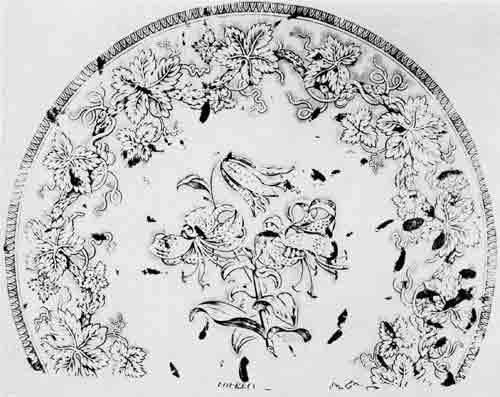
151 Lobelia. Black splotches are due to damage to the copper plate.
|
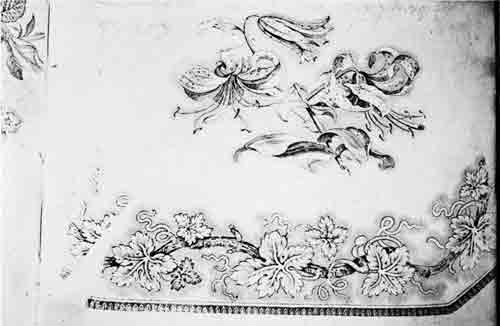
152 Lobelia (from factory pattern book compiled between 1868 and 1879).
The floral fragment on the left is not part of the pattern.
|
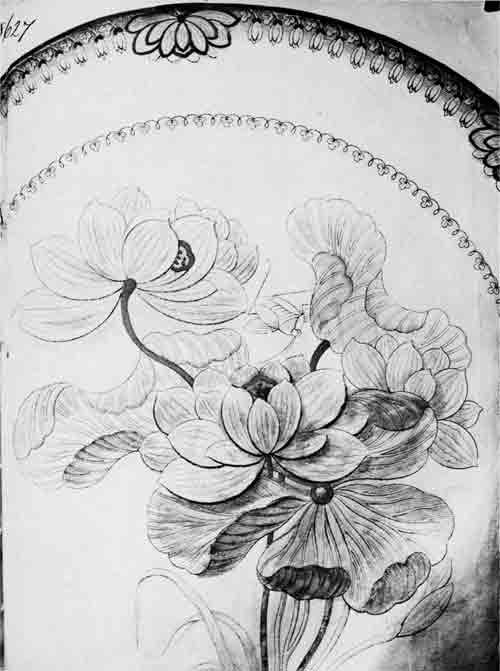
153 Lotus (1850—?). Registered 20 December 1850. Excavated examples
were made by W.T. Copeland. (Illustration from factory pattern
book.)
|
154—155 Louis Quatorze (1844—?). Registered 2 December 1844.
Excavated examples were made by Copeland and Garrett, and W.T. Copeland.
The border was combined with more elaborate centres and registered on 21
October 1845 as Continental Views. The two patterns were used at the
same time.
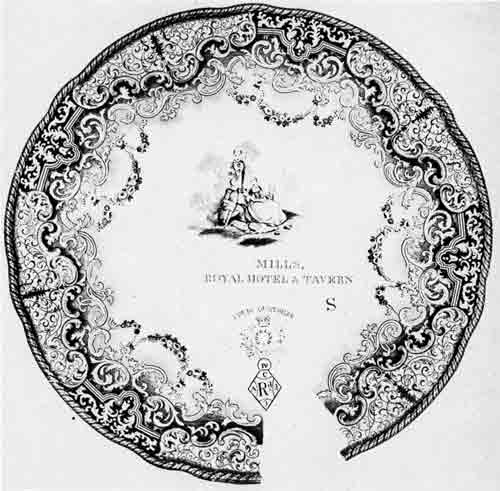
154 Louis Quatorze.
|
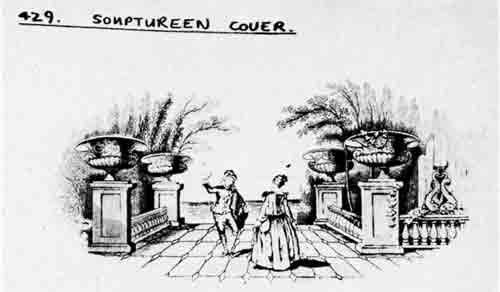
155 Louis Quatorze.
|
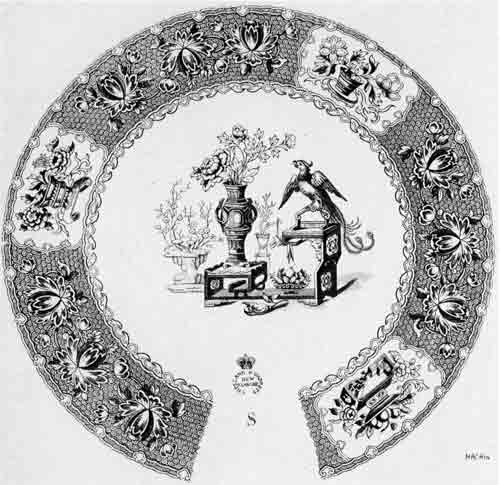
156 Macaw (ca. 1838—post-1872). Earliest pattern number is 6250.
Excavated examples were made by Copeland and Garrett, and W.T.
Copeland. The border was used in another pattern, Pagoda, which is
numbered 6249. The two patterns were used at the same time. Both were
given other numbers in the D series (D9013, D9014) between 1872 and
1873. This might mean that they were still in use at that date.
|
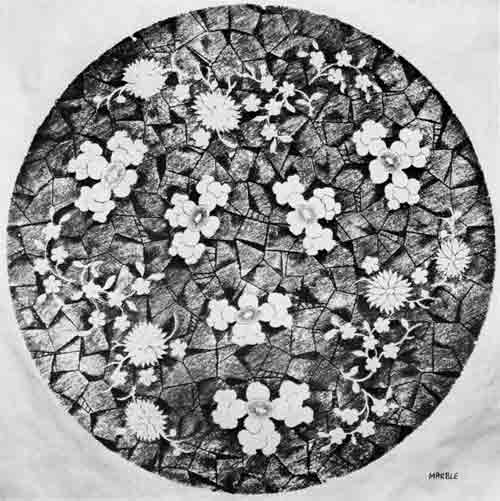
157 Marble (ca. 1822—?). Earliest pattern number is 3739. An
alternative name is "Cracked Ice and Prunus."
|
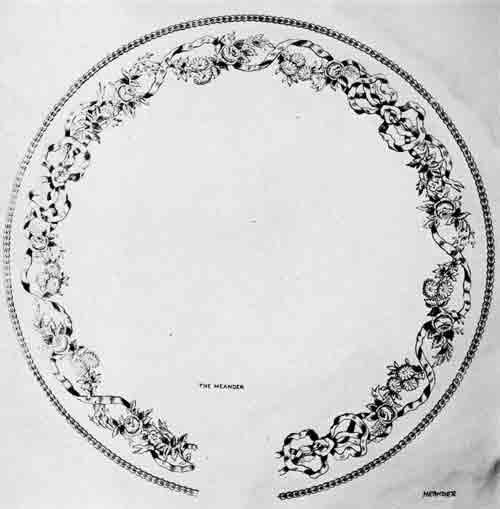
158 Meander (ca. 1882). It appears in W.T. Copeland and Sons' 1882
catalogue.
|
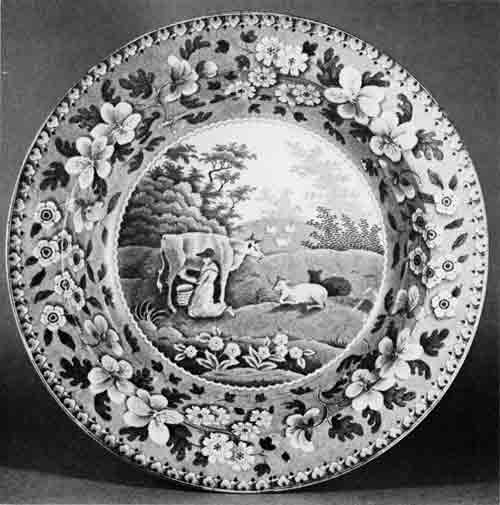
159 Milkmaid (ca. 1819—20th century). Earliest pattern number is
3166 (border only). The same border was used with the well-known
pattern Tower, still being made by Spode Limited.
|
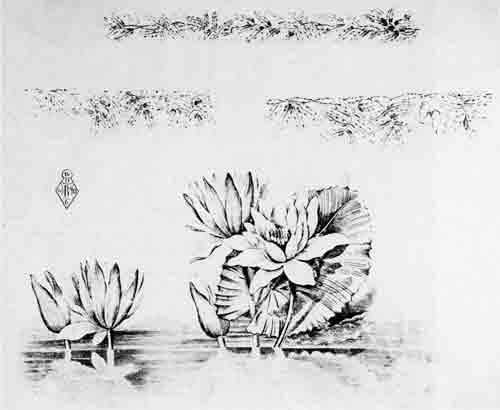
160 Nymphea (1862—post-1882). Registered 13 March 1862. It
appears in W.T. Copeland and Sons' 1882 catalogue. Excavated examples
bear post-1850 Copeland marks. Unlike most Spode/Copeland patterns, it
appears to have been used exclusively on toiletware.
|
161—162 Onyx (ca. 1862—post-1873). Earliest pattern number is
D3017. It was given number D7986 in about 1871. Excavated examples were
made by W.T. Copeland and Sons and are date-marked 1873.
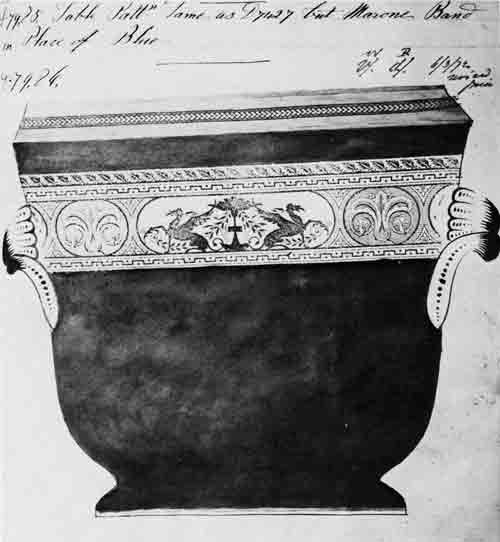
161 Onyx (from factory pattern book).
|
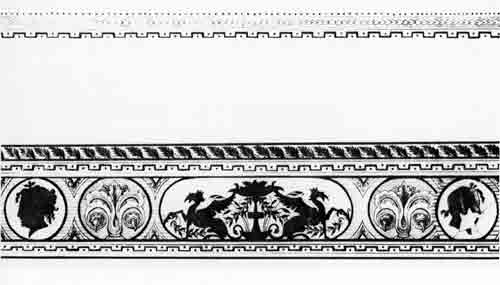
162 Onyx.
(Drawing by I. Cameron.)
|
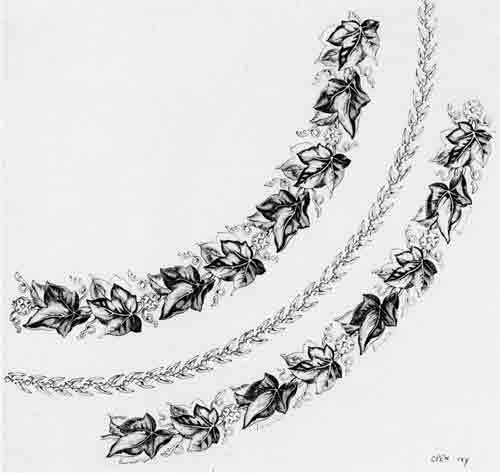
163 Open Ivy (1850—?). Excavated examples were made by W.T.
Copeland and/or W.T. Copeland and Sons. Marked examples bear a post-1850
factory mark.
|
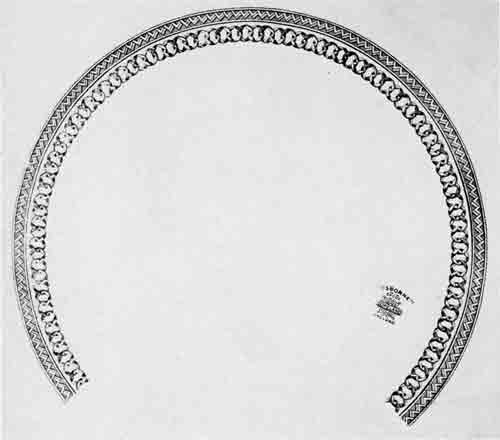
164 Osborne (ca. 1868—post-1882). It was given number D6427 about
1868. It appears in W.T. Copeland and Sons' 1882 catalogue.
|
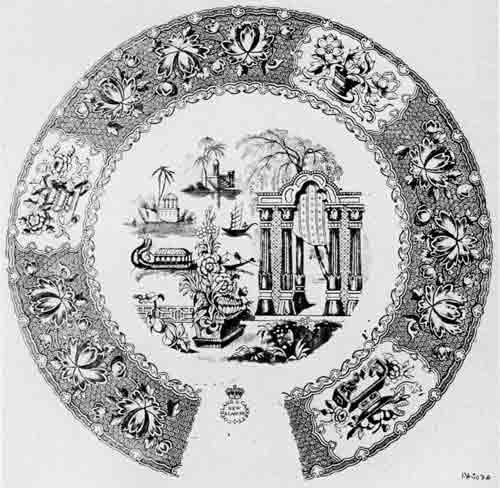
165 Pagoda (ca. 1838—post-1872). Earliest pattern number is
6249. The same border was used on Macaw, which was given number 6250.
Both patterns were given other numbers in the D series (D9013, D9014)
between 1872 and 1873. A Copeland and Garrett mark appears on the copper
plate.
|
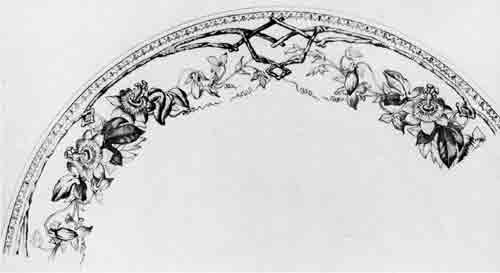
166 Passion Flower (pre-1873—20th century). Excavated examples
were made by W.T. Copeland and Sons and are date-marked 1873. A
20th-century mark appears on the copper plate. It has no centre design.
(Drawing by I. Cameron.)
|
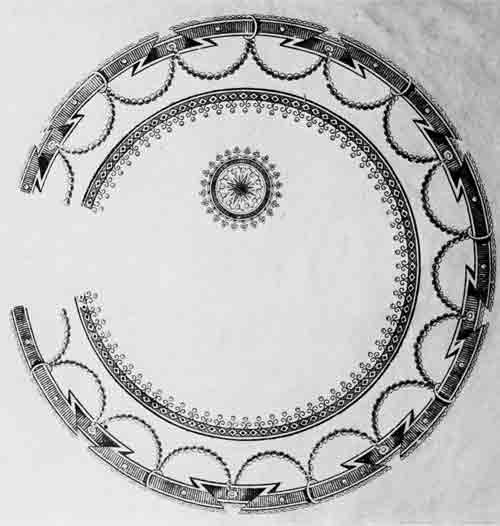
167 Pearls (post-1850—post-1882). It appears in W.T. Copeland
and Sons' 1882 catalogue. All excavated examples bear post-1850 factory
marks.
|
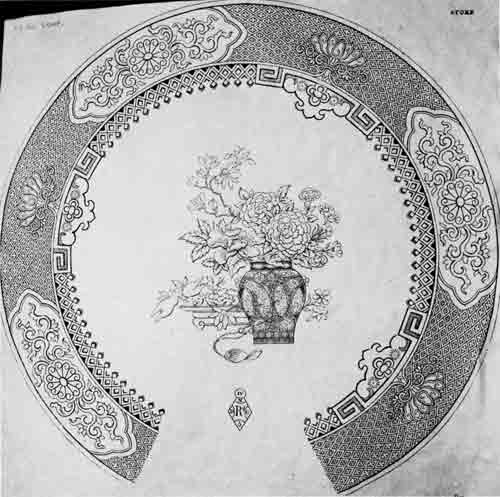
168 Pekin (1864—post-1882). Registered
6 September 1864. It was given a number in the D series in 1865. It
appears in W.T. Copeland and Sons' 1882 catalogue.
|
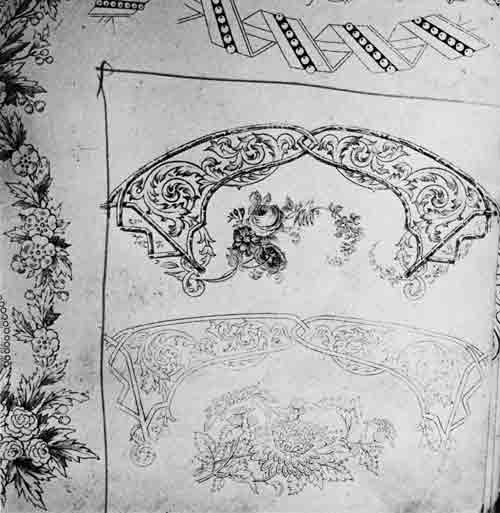
169 Pergola (ca. 1844—post-1868). Earliest pattern number is
8084. Prints of it appear in a factory pattern book compiled between
1868 and 1879. The name "Pergola" has only tentatively been ascribed
to it. (Illustration from factory pattern book.) The designs at the top
and right are not part of the pattern.
|
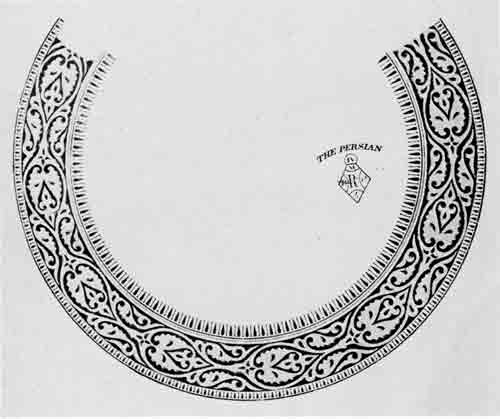
170 Persian (1859—post-1882). Registered 14 October 1859. It
appears in W.T. Copeland and Sons' 1882 catalogue.
|
171—172 Portland Vase (ca. 1831—post-1833). Earliest pattern
number is 5057. Excavated examples were made only by Copeland and
Garrett. Because of the intricacies of the border, it was difficult and
therefore expensive to produce.
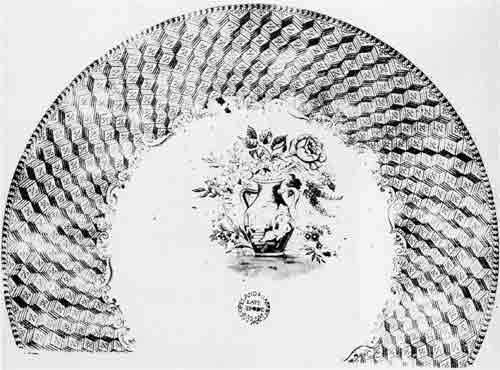
171 Portland Vase.
|
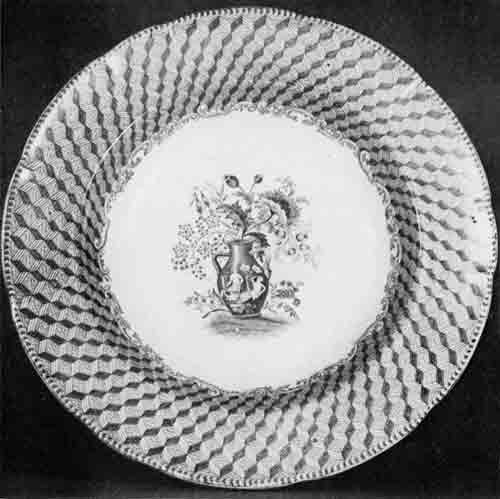
172 Portland Vase.
|
173—174 Raphaelesque (1845—post-1872), Registered 25 April
1845. Excavated examples were made by Copeland and Garrett, and W.T.
Copeland. The earliest pattern number, 7384, might indicate a slightly
earlier introduction date, about 1841.
There is a notation dated
January 1872 in a factory pattern book regarding it (Fig. 173). It was
given D numbers 2578 and 2579 in 1861. Notations above these numbers
state "Copper destroyed'" (Fig. 174), but it is not known when this
occurred or if new copper plates were engraved.

173 Raphaelesque (from factory pattern book). The pattern on the right
is Tulip.
|
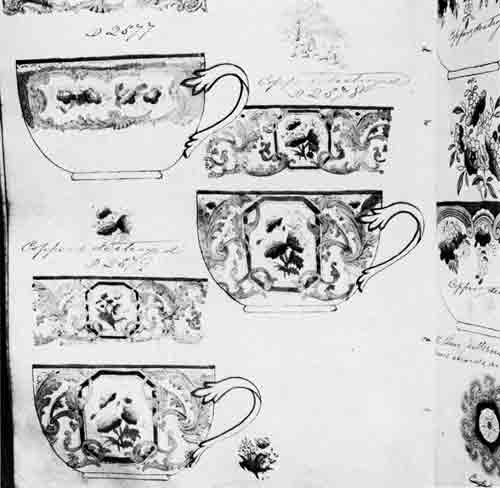
174 Raphaelesque appears under numbers D2578 and D2579 (from factory
pattern book). Pattern D2577 is Watteau. The designs on the right are
not part of Raphaelesque or Watteau.
|
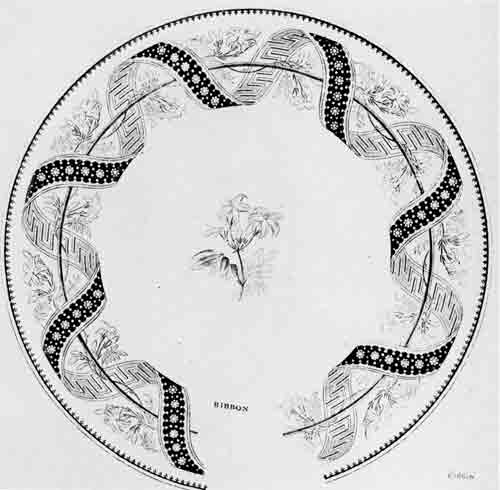
175 Ribbon (ca. 1847—?). Earliest pattern number is 8960. Excavated
examples were made by W.T. Copeland.
|
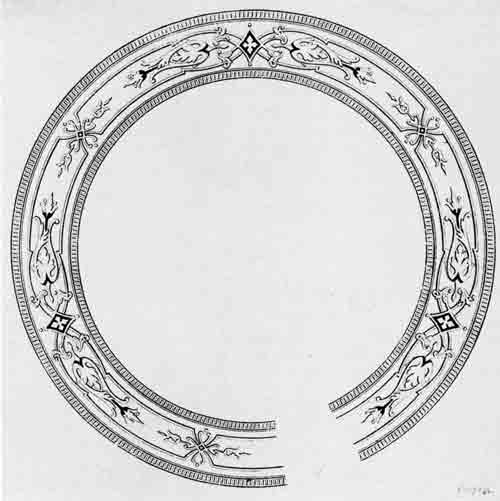
176 Roma (ca. 1872—post-1882). Earliest pattern number is D8920.
Excavated examples were made by W.T. Copeland and Sons. It appears in
W.T. Copeland and Sons' 1882 catalogue.
|
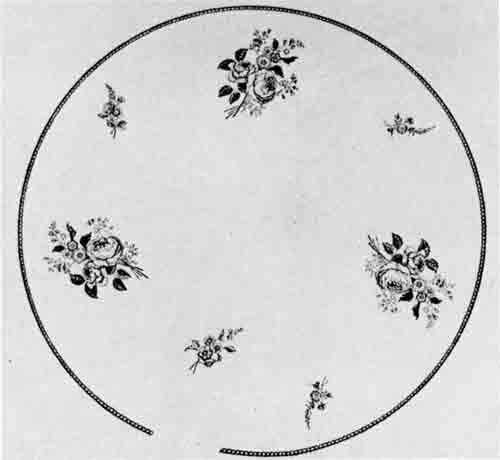
177 Rose and Sprigs (ca. 1847—?). Introductory date unknown. It has
been found on objects bearings moulded registration mark dated 9 January
1847 and printed W.T. Copeland marks. With a different border, it is
called "Sevres."
(United States, National Park Service.)
|
178—188 Ruins (1849—20th century). Registered 15
September 1848 under the names "Ruins" and "Melrose." Excavated examples
were made by W.T. Copeland. It appears under both names in W.T. Copeland
and Sons' 1882 catalogue. Twentieth-century marks occur on the copper
plates.
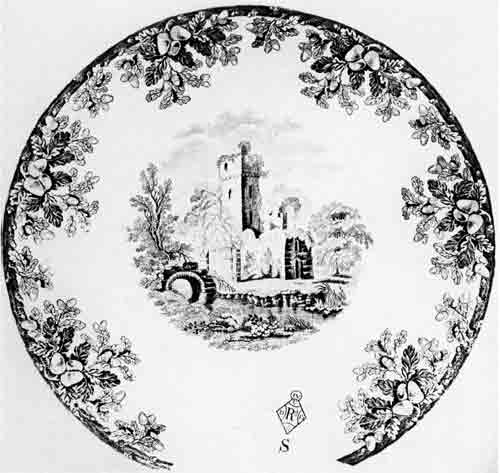
178 Ruins.
|
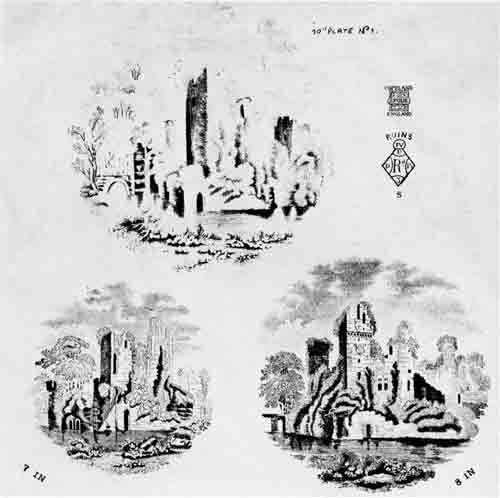
179 Ruins.
|
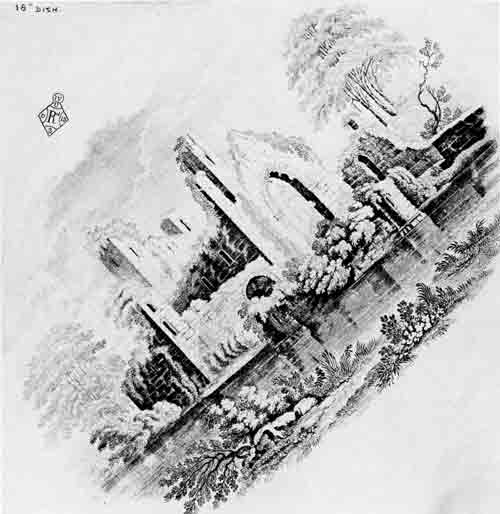
180 Ruins.
|
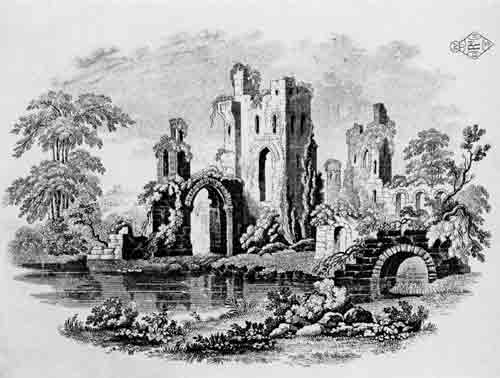
181 Ruins.
|
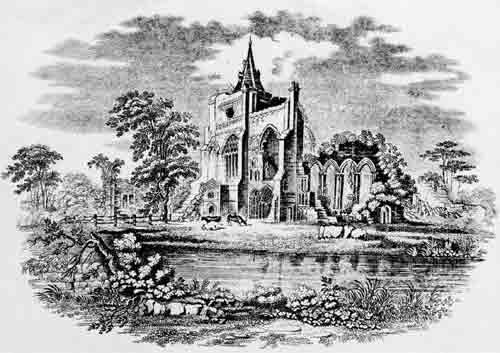
182 Ruins.
|
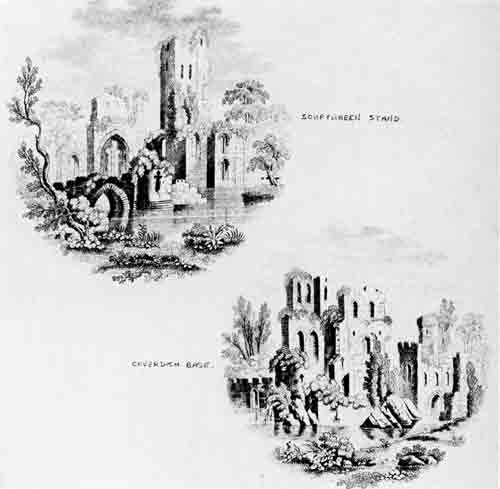
183 Ruins.
|
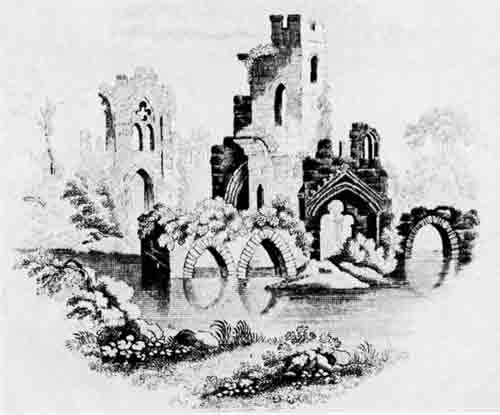
184 Ruins.
|
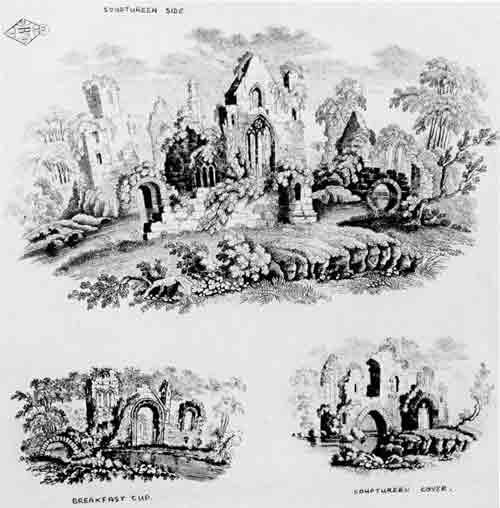
185 Ruins.
|
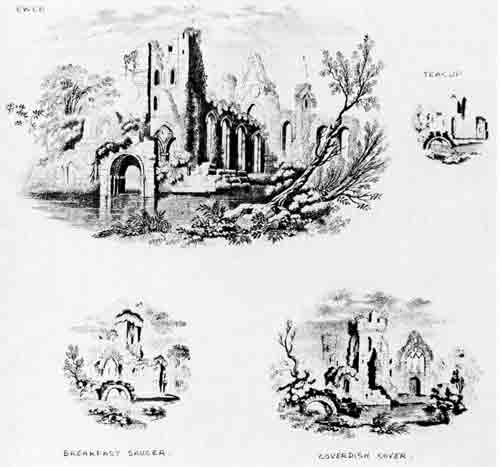
186 Ruins.
|
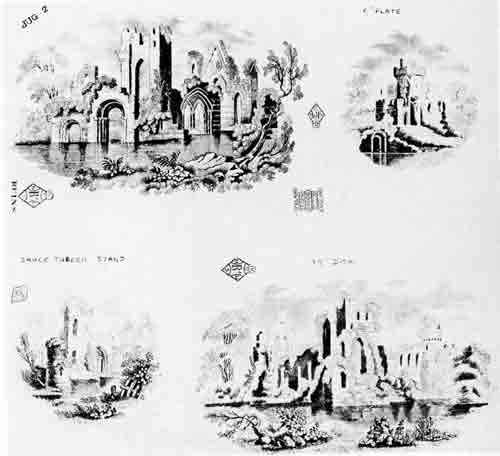
187 Ruins.
|
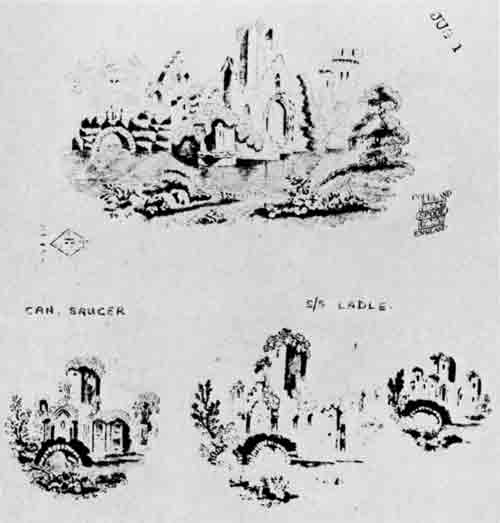
188 Ruins.
|
189—204 Rural Scenes (1850-20th century). Registered 19 September
1850. Excavated examples were made by W.T. Copeland. The centre scenes
are derived from watercolours by Edward Duncan and without the border
it is called "Duncan Scenes." Both patterns appear in W.T. Copeland and
Sons' 1882 catalogue. During the 20th century the pattern, complete with
border, was called both "Duncan Scenes" and "Priscilla Alden."
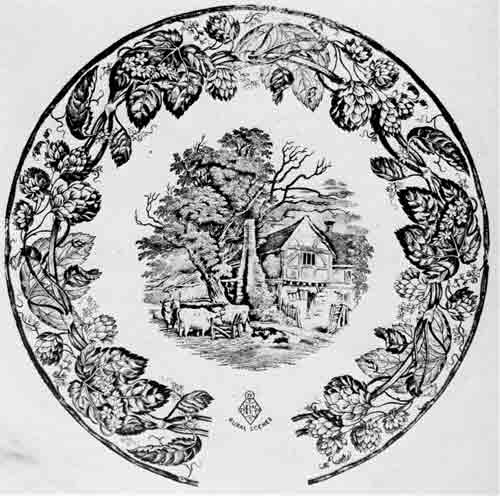
189 Rural Scenes.
|
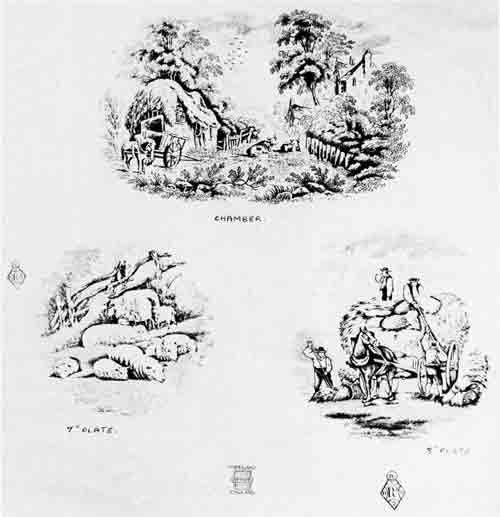
190 Rural Scenes.
|
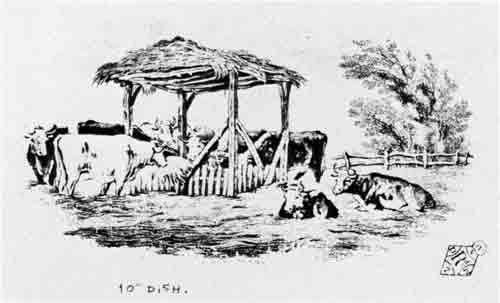
191 Rural Scenes.
|
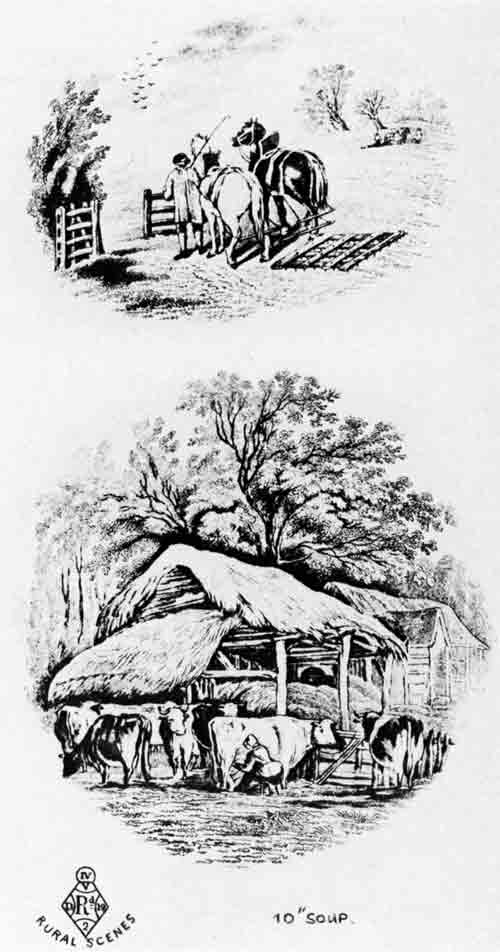
192 Rural Scenes.
|
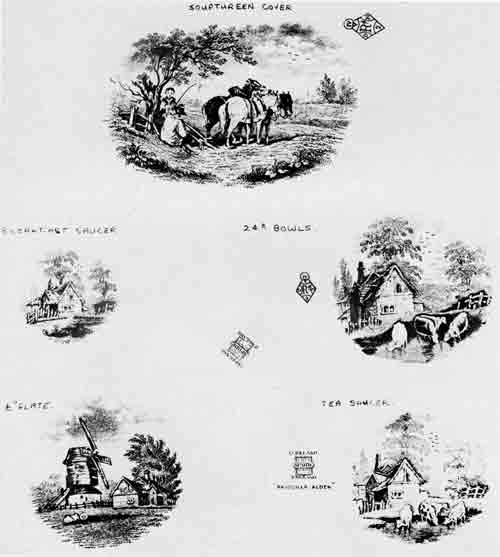
193 Rural Scenes. The scene at lower right is a 20th-century
re-engraving of the scene immediately above it.
|
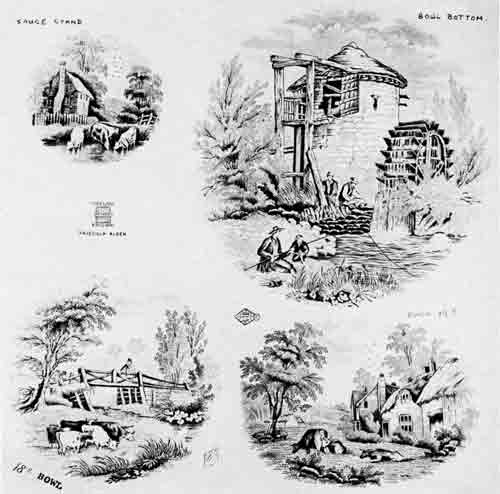
194 Rural Scenes.
|
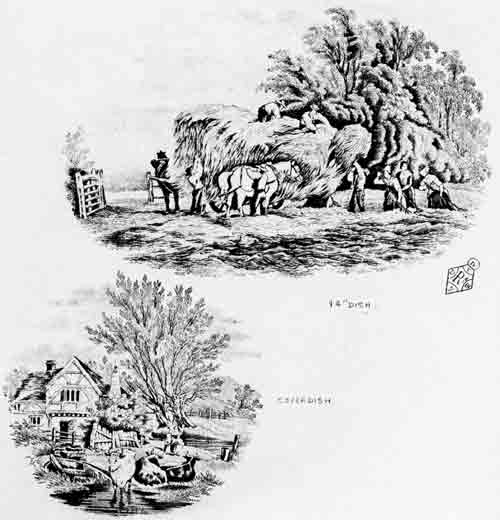
195 Rural Scenes.
|
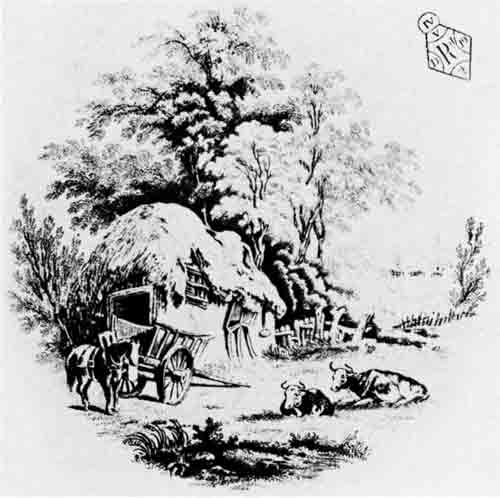
196 Rural Scenes.
|
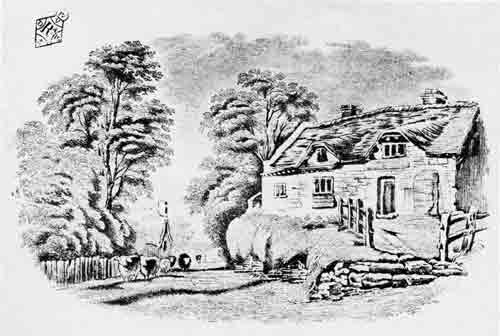
197 Rural Scenes.
|
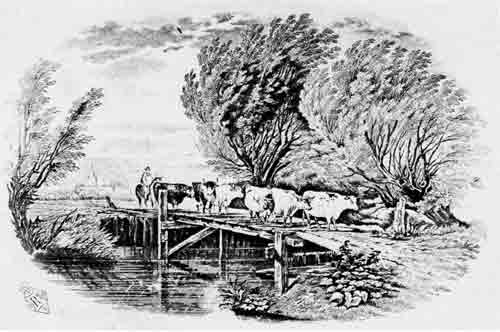
198 Rural Scenes.
|

199 Rural Scenes.
|
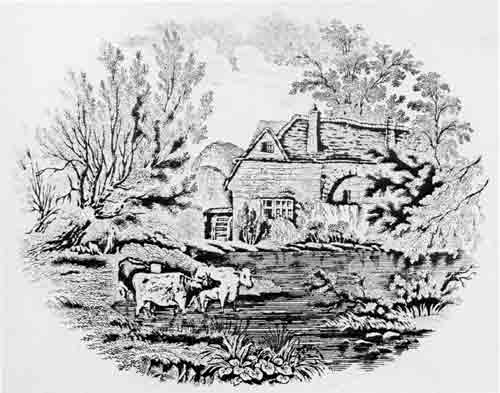
200 Rural Scenes.
|
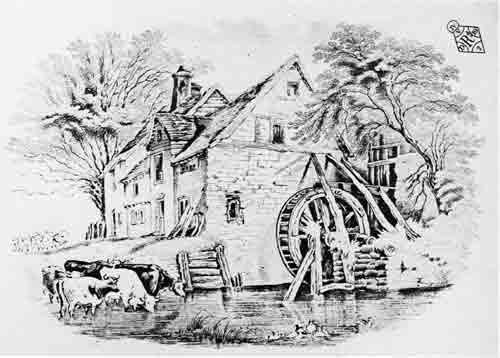
201 Rural Scenes.
|
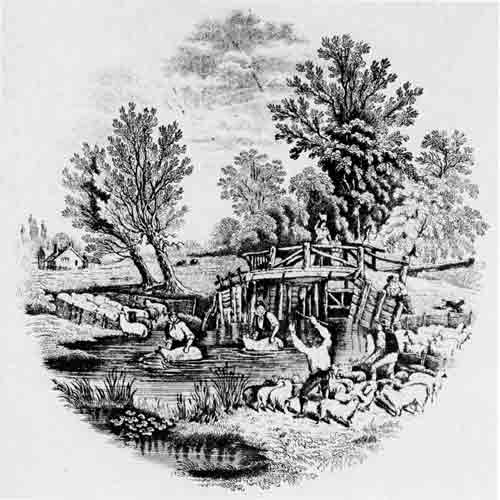
202 Rural Scenes.
|
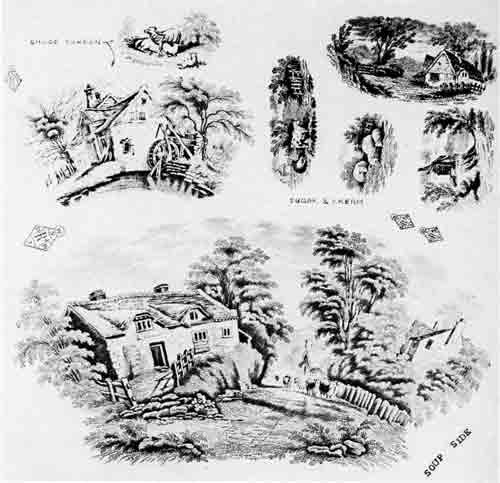
203 Rural Scenes.
|
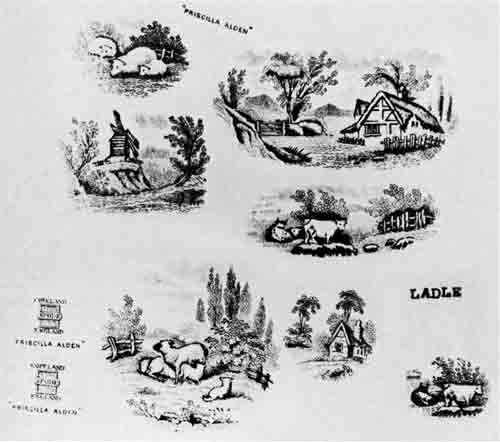
204 Rural Scenes. The four upper scenes are 20th-century re-engravings
of scenes in Figure 203.
|
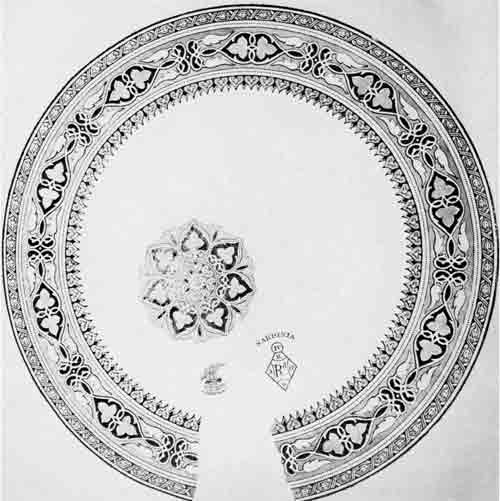
205 Sardinia (1858-1910). Registered 17 December 1858. It appears
in W.T. Copeland and Sons' 1882 catalogue. A mark used between 1894 and
1910 (Godden 1964:172) appears on the copper plates.
|
|

